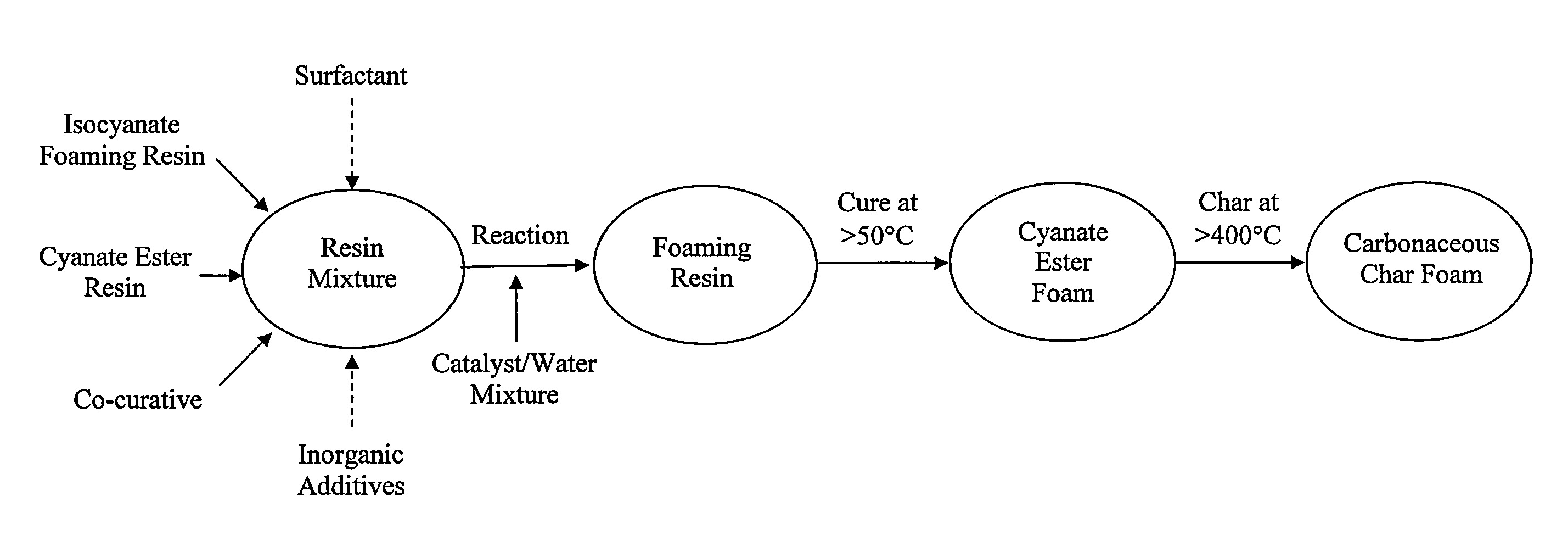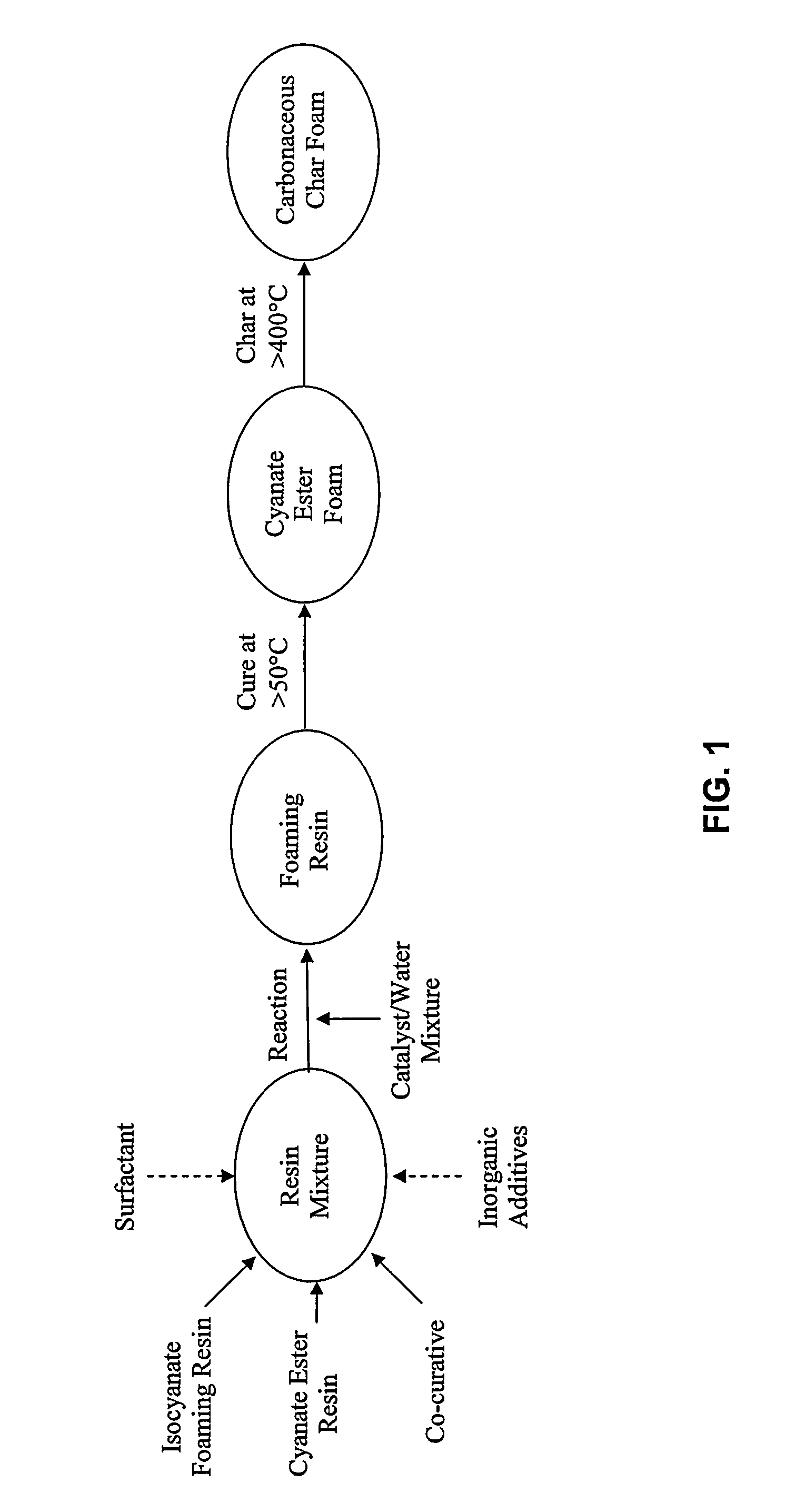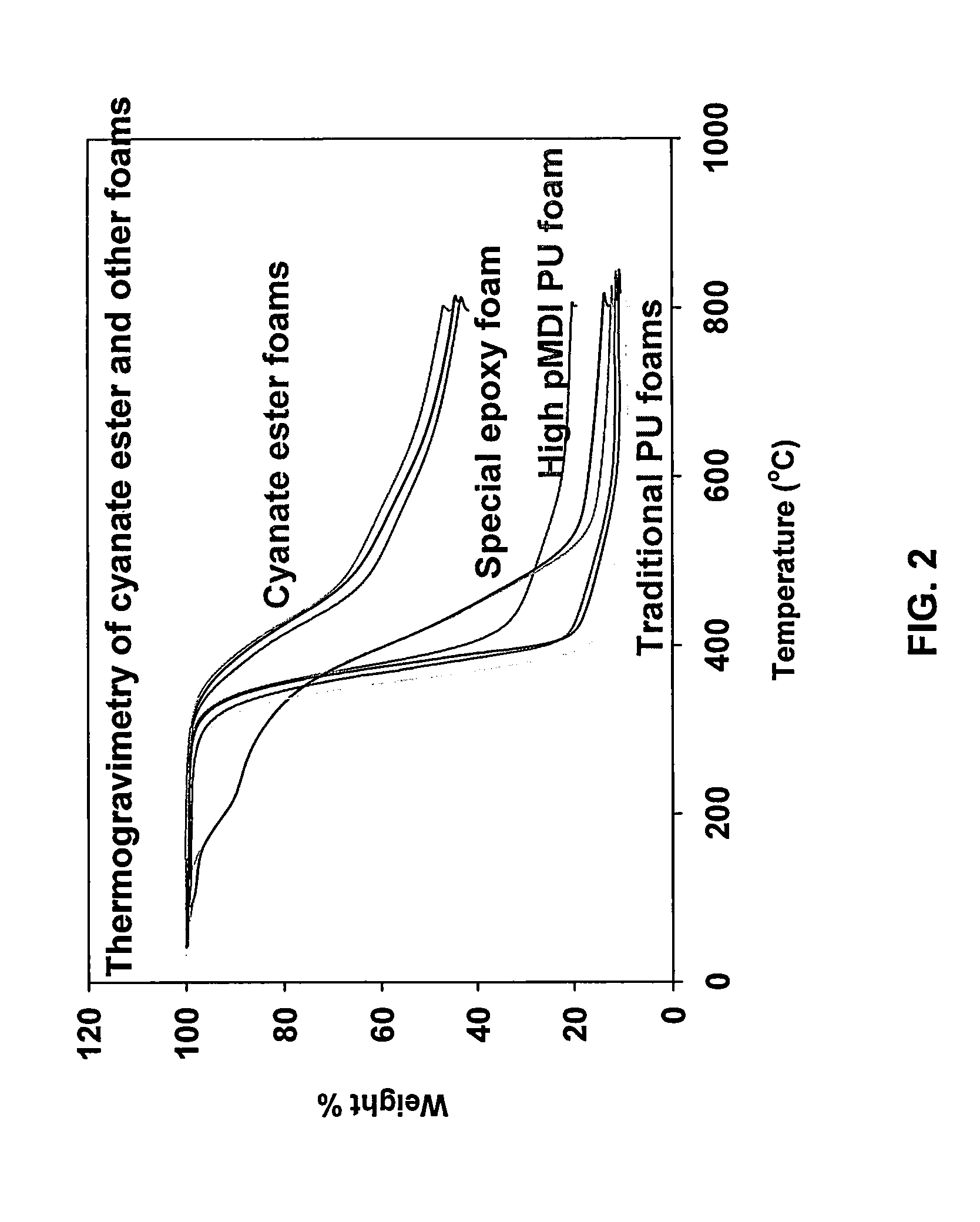Method of making a cyanate ester foam
a technology of cyanate ester and foam, which is applied in the field of preparation of foamed cyanate ester resin materials, can solve the problems of inability to achieve high char yield, inability to find detailed methods on how to chemically foam and concurrently cure cyanate esters into solid foamed materials, and inability to achieve commercial polymeric foams
- Summary
- Abstract
- Description
- Claims
- Application Information
AI Technical Summary
Benefits of technology
Problems solved by technology
Method used
Image
Examples
example 1
Slow Curable Foamed Cyanate Ester Resin
[0033]In one embodiment, 80 parts of XU371 cyanate ester resin was combined with 20 parts (by weight) pMDI (Dow PAPI 27 isocyanate resin). In this embodiment, temperature was maintained at approximately 65° C. at which the viscosity was low enough for resin mixing purposes. 0.5 pph (parts per hundred parts of total resin mixture) silicone-based surfactant such as DC 193 (manufactured by Air Products) and 0.4 pph of 1-methyl imidazole catalyst and 1 pph of water was added. A foaming resin of slowly curable nature and good flow was produced. In another embodiment, 80 parts of Lonza PT30 cyanate ester resin instead of XU371 cyanate ester was used. Such slowly curing foams do not have optimized cell structure and are relatively brittle.
example 2
Foamed Cyanate Ester Resin with Basic Cure
[0034]In one embodiment, 55 parts of XU371 cyanate ester resin was combined with 20 parts pMDI (Dow PAPI 27 isocyanate resin). An additional epoxy curative, Epon 161, was added as 25 parts (by weight). In this embodiment, temperature was maintained at approximately 65° C. at which the viscosity was low enough for resin mixing purposes. 0.5 pph (parts per hundred parts of total resin mixture) silicone-based surfactant such as DC 193 (manufactured by Air Products) and 0.4 pph of 1-methyl imidazole catalyst and 1 pph of water was added. A foaming resin of curable nature and good flow was produced. In another embodiment, 55 parts of Lonza PT30 cyanate ester resin instead of XU371 cyanate ester was used.
example 3
Foamed Cyanate Ester Resin with Different Isocyanate
[0035]In one embodiment, 55 parts of XU371 cyanate ester resin was combined with 20 parts pMDI (Suprasec 9561 isocyanate resin). An additional epoxy curative, Epon 161, was added as 25 parts (by weight). In this embodiment, temperature was maintained at approximately 65° C. at which the viscosity was low enough for resin mixing purposes. 0.5 pph (parts per hundred of total resin) silicone-based surfactant such as DC 193 (manufactured by Air Products) and 0.4 pph of 1-methyl imidazole catalyst and 1 pph of water was added. A foaming resin of curable nature and good flow was produced. In another embodiment, 55 parts of Lonza PT30 cyanate ester resin instead of XU371 cyanate ester was used.
PUM
| Property | Measurement | Unit |
|---|---|---|
| temperature | aaaaa | aaaaa |
| temperature | aaaaa | aaaaa |
| temperatures | aaaaa | aaaaa |
Abstract
Description
Claims
Application Information
 Login to View More
Login to View More - R&D Engineer
- R&D Manager
- IP Professional
- Industry Leading Data Capabilities
- Powerful AI technology
- Patent DNA Extraction
Browse by: Latest US Patents, China's latest patents, Technical Efficacy Thesaurus, Application Domain, Technology Topic, Popular Technical Reports.
© 2024 PatSnap. All rights reserved.Legal|Privacy policy|Modern Slavery Act Transparency Statement|Sitemap|About US| Contact US: help@patsnap.com










